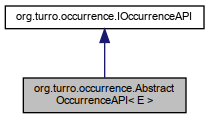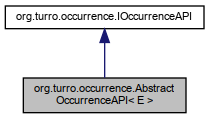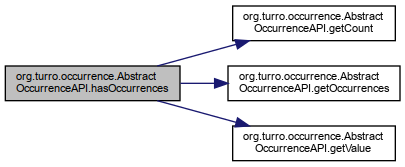

Public Member Functions | |
| long | getCount () |
| boolean | hasOccurrences (String value) |
| List< E > | getList () |
| void | changeOccurrences (String newValue) |
| void | removeOccurrences () |
 Public Member Functions inherited from org.turro.occurrence.IOccurrenceAPI Public Member Functions inherited from org.turro.occurrence.IOccurrenceAPI | |
| String | getName () |
| List< String > | getPossibles (String value) |
Protected Member Functions | |
| Dao | getDao () |
| abstract Dao | createDao () |
| abstract List< E > | getOccurrences (String value) |
| abstract String | getValue (E value) |
| abstract void | setValue (E value, String newValue) |
Definition at line 30 of file AbstractOccurrenceAPI.java.
| void org.turro.occurrence.AbstractOccurrenceAPI< E >.changeOccurrences | ( | String | newValue | ) |
Implements org.turro.occurrence.IOccurrenceAPI.
Definition at line 51 of file AbstractOccurrenceAPI.java.

|
abstractprotected |

| long org.turro.occurrence.AbstractOccurrenceAPI< E >.getCount | ( | ) |
Implements org.turro.occurrence.IOccurrenceAPI.
Definition at line 35 of file AbstractOccurrenceAPI.java.

|
protected |
Definition at line 73 of file AbstractOccurrenceAPI.java.


| List<E> org.turro.occurrence.AbstractOccurrenceAPI< E >.getList | ( | ) |
Definition at line 46 of file AbstractOccurrenceAPI.java.

|
abstractprotected |

|
abstractprotected |

| boolean org.turro.occurrence.AbstractOccurrenceAPI< E >.hasOccurrences | ( | String | value | ) |
Implements org.turro.occurrence.IOccurrenceAPI.
Definition at line 40 of file AbstractOccurrenceAPI.java.

| void org.turro.occurrence.AbstractOccurrenceAPI< E >.removeOccurrences | ( | ) |
Implements org.turro.occurrence.IOccurrenceAPI.
Definition at line 61 of file AbstractOccurrenceAPI.java.

|
abstractprotected |
